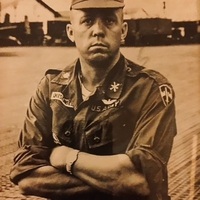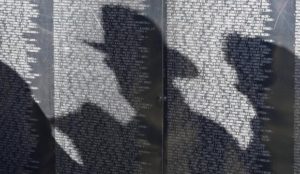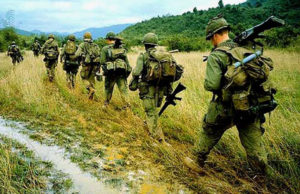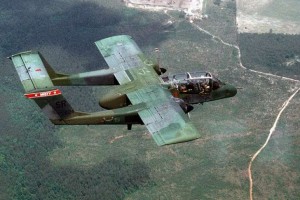By JOHN KANELIS / johnkanelis_92@hotmail.com
Reader’s Digest magazine has a regular feature that tells of the “most unforgettable characters” in people’s lives.
Many of us have met people who fit into that category.
Well, the most unforgettable character in my life has passed on. I got word of his death tonight and I want to share a tale or two with you about him.
His name was Henry L. Quisenberry, a retired Army lieutenant colonel. He was my commanding officer for a time while I served in Vietnam. He died Jan. 31 at his home in Enterprise, Ala.
I reported for duty in Vietnam in the spring of 1969. I was assigned to the 245th Army Surveillance Aircraft Company at Marble Mountain, Da Nang, with orders to report for duty on a crew assigned to service an OV-1 Mohawk.
Col. Quisenberry showed up eventually to assume interim command of the 212th Aviation Battalion. As I recall, our CO was on R&R and Col. Quisenberry was filling in. While he was there, he called me to his office. I had no clue what he wanted.
He was sitting behind a desk. He offered me a cigar and invited me to sit down. “I see here that you’re a Mohawk repairman,” he said. “Well, I am a Mohawk driver.” He told me the Mohawk is a reliable bird and he enjoyed flying it.
He then told me he needed me to report on a temporary duty assignment with what was called the Army Aviation Element, based at the I Corps Tactical Operations Center in Da Nang. My duties would include running a radio, and clearing aircraft to land at a helipad nearby. We scheduled flights for officers and scrambled troop lift and fire support missions for Army helicopter units based at Marble Mountain.
Col. Quisenberry was a fantastic officer. He was loyal to his men and always had our backs. He was serving his third tour of duty in Vietnam and he confided in me that it would be his last tour, that he intended to retire as soon as he returned home. He was a great story teller
An incident occurred that illustrates how reliable he could be in a pinch. A pilot sought to land on our helipad. I was on the radio at the time. I couldn’t quite give him clearance to land; I cannot remember the circumstance. We began arguing over the air about my reluctance to clear him to park his bird. I mentioned Col. Quisenberry over the air, referring to his call sign. The pilot then said, “You better tell Check Pull Alpha Six to get his sh** together,” at which time Col. Quisenberry — who was standing behind me and overheard the entire exchange — grabbed the radio receiver and said, “This is Check Pull Alpha Six. Park your bird and report to me … pahdnuh.
The colonel then chewed the pilot out royally and told him to apologize to me for being an ass over the air.
There you have it. Col. Quiz embedded himself at that moment as the most unforgettable character I ever met.



